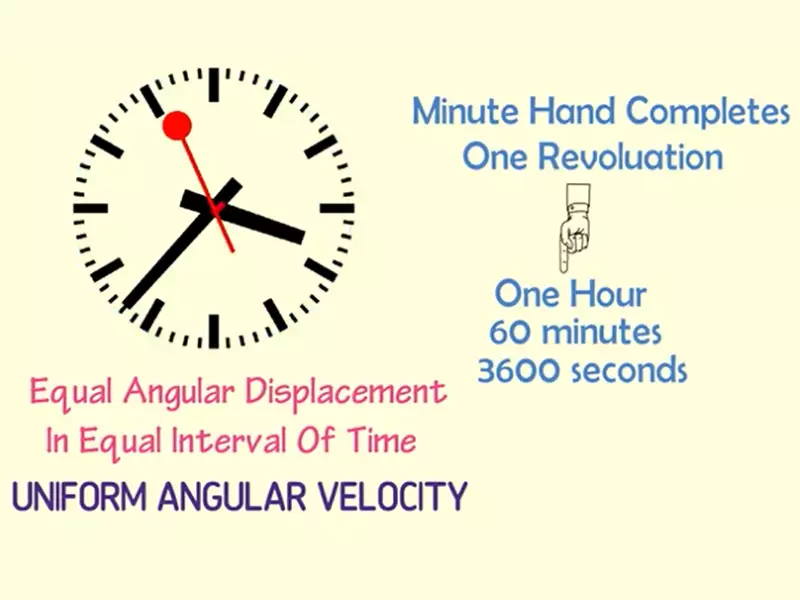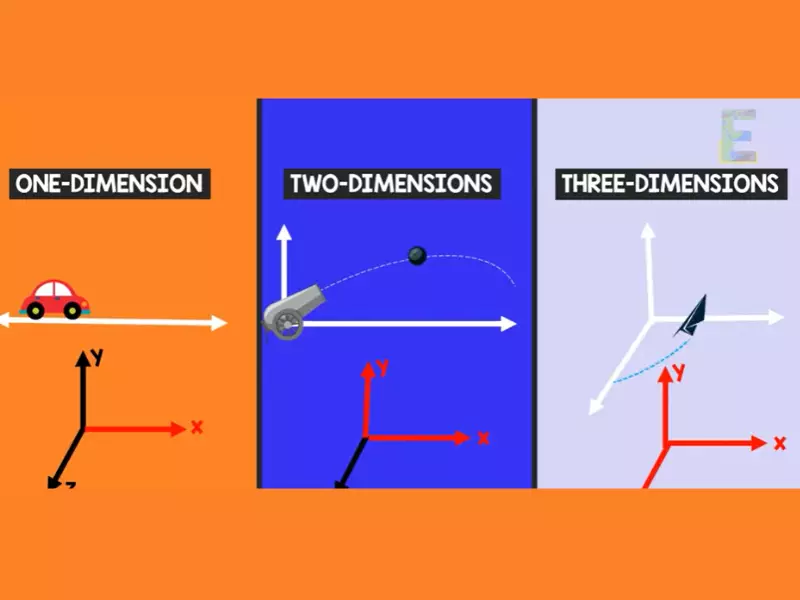Acceleration, a fundamental concept in physics, is pivotal in understanding the motion of objects. It comes in two primary forms: linear, concerning the change in velocity over time in a straight line, and angular, related to rotational motion. Grasping these concepts is essential for comprehending the dynamics of various physical systems, from the simplest mechanisms to complex astronomical bodies.
The relation between angular and linear acceleration lies at the heart of rotational dynamics. Angular acceleration is directly proportional to linear acceleration through the radius of the circular path. In essence, linear acceleration is the tangential acceleration at a point on a rotating object, and it can be calculated by multiplying the angular acceleration by the radius of rotation.
This relation plays a crucial role in a wide array of applications, from the engineering of precise mechanical systems to the analysis of planetary orbits. It provides a bridge between the rotational and translational movements, allowing for a comprehensive understanding of motion in three-dimensional space. Understanding this relationship enables the prediction and manipulation of objects’ behavior in various fields, including mechanical engineering, sports science, and automotive design.

Basics of Acceleration
Acceleration is a key concept in physics that describes the rate of change of velocity of an object. It can be classified into two types: linear acceleration and angular acceleration. Both play pivotal roles in understanding motion in our daily lives and in specialized fields.
Linear Acceleration
Definition and Formula
Linear acceleration is the rate at which an object’s velocity changes in a straight line. It is represented by the formula:
�=Δ�Δ�a=ΔtΔv
where �a is the acceleration, Δ�Δv is the change in velocity, and Δ�Δt is the time interval over which this change occurs.
Examples in Everyday Life
- Driving a Car: When you press the accelerator or the brake, the car speeds up or slows down in a linear direction.
- Playing Sports: A football kicked towards the goal accelerates linearly from the point of kick to when it stops.
Angular Acceleration
Definition and Formula
Angular acceleration refers to the rate of change of angular velocity of an object in rotational motion. It is given by the formula:
�=Δ�Δ�α=ΔtΔω
where �α is the angular acceleration, Δ�Δω is the change in angular velocity, and Δ�Δt is the time interval.
Examples in Everyday Life
- Spinning a Top: The top accelerates angularly as it begins to spin faster.
- Riding a Bicycle: The wheels of the bicycle undergo angular acceleration as you pedal faster.
Core Principles
Understanding the relationship between linear and angular acceleration is fundamental for comprehending motion in various contexts, from everyday examples to advanced applications in technology and science.
Relation Overview
The connection between angular and linear acceleration is critical in the analysis of rotational and translational movements. Linear acceleration at a point on the edge of a rotating object is directly proportional to its angular acceleration and the radius of the path.
Mathematical Relationship
The relationship between angular and linear acceleration can be expressed through the formula:
�=�⋅�a=α⋅r
where �a is the linear acceleration, �α is the angular acceleration, and �r is the radius of rotation. This formula is derived from combining the basic definitions of linear and angular motion.
Derivation of the Formula
- Start with the definition of linear acceleration (�a) and angular acceleration (�α).
- Link the two by considering the circumference of the rotation path and the time taken for one complete rotation.
- Apply the relationship between linear velocity and angular velocity (�=�⋅�v=ω⋅r) to find the linear acceleration.
Key Variables and Constants
- �a: Linear acceleration
- �α: Angular acceleration
- �r: Radius of the circular path
- Δ�Δv and Δ�Δω: Changes in linear and angular velocity, respectively
- Δ�Δt: Time interval over which changes occur
Applications
Mechanical Engineering
In mechanical engineering, understanding the relation between angular and linear acceleration aids in the design and analysis of machinery, especially in systems involving rotational components like gears and turbines.
Sports Science
Knowledge of angular and linear acceleration is used in sports science to improve athlete performance, especially in sports involving throwing or swinging, by optimizing motion for maximum efficiency and power.
Automotive Industry
The automotive industry relies on the principles of angular and linear acceleration to enhance vehicle dynamics, such as steering, suspension systems, and overall performance optimization.
Calculating Accelerations
Tools and Techniques
Various tools and techniques are employed to calculate linear and angular accelerations, including accelerometers for linear acceleration and gyros for angular acceleration.
Practical Examples
Step-by-Step Calculation Guide
- Linear Acceleration:
- Measure the initial and final velocities (��vi and ��vf) of the object.
- Record the time interval (Δ�Δt) during which the velocity change occurs.
- Apply the formula �=��−��Δ�a=Δtvf−vi.
- Angular Acceleration:
- Determine the initial and final angular velocities (��ωi and ��ωf).
- Measure the time interval (Δ�Δt) over which the angular velocity changes.
- Use the formula �=��−��Δ�α=Δtωf−ωi.

Factors Influencing Acceleration
Acceleration is not a standalone phenomenon. Various factors, such as external forces and the mass and inertia of objects, significantly impact both linear and angular acceleration. Understanding these influences is crucial for accurately predicting and manipulating the motion of objects.
External Forces
Impact on Linear and Angular Acceleration
External forces are primary drivers of acceleration. In the case of linear acceleration, a force applied in the direction of motion increases an object’s velocity, while a force applied opposite to the direction of motion decreases it. For angular acceleration, torque—a rotational force—plays a similar role. The amount of torque applied affects how quickly an object starts or stops spinning.
- Gravity: Affects objects in free fall or projectiles, inducing linear acceleration.
- Friction: Acts opposite to the direction of motion, affecting both linear and angular acceleration by slowing down objects.
Mass and Inertia
Their Role in Acceleration Dynamics
The mass of an object directly influences its acceleration. According to Newton’s second law, �=��F=ma, the same force applied to objects of different masses results in different accelerations. Inertia, or an object’s resistance to changes in its state of motion, also plays a critical role, particularly in angular acceleration. Objects with greater mass and rotational inertia require more torque to change their angular velocity.
- Mass: Heavier objects accelerate more slowly under the same force.
- Inertia: Objects with greater inertia need more effort to change their rotational speed.
Acceleration in Circular Motion
Circular motion involves both linear (tangential) and angular acceleration components. Centripetal and centrifugal forces are key to understanding this type of motion.
Centripetal and Centrifugal Forces
Explanation and Effects on Acceleration
Centripetal force is required for an object to move in a circular path, pointing towards the center of the circle and maintaining the circular motion. This force results in centripetal acceleration. Centrifugal force, on the other hand, is an apparent force that acts outward on an object moving in a circular path, observed from a rotating frame of reference.
- Centripetal Acceleration: Keeps an object moving in a circle.
- Centrifugal Effect: Felt by objects in a rotating reference frame, giving the sensation of being pushed outward.
Real-world Examples
Applications in Circular Motion Scenarios
- Satellites Orbiting Earth: Experience centripetal acceleration due to gravity.
- Roller Coasters: Utilize centripetal force to keep cars on the track during loops.
Challenges and Solutions
Accurately measuring and applying acceleration involves overcoming several challenges. Ensuring measurement accuracy and addressing application difficulties are essential for successful implementation in practical scenarios.
Measurement Accuracy
Common Issues and How to Overcome Them
Precise measurement of acceleration is crucial but often challenging due to environmental noise, instrument precision, and the need for calibration. Solutions include:
- Use of Advanced Sensors: Selecting high-quality accelerometers and gyroscopes.
- Calibration: Regular calibration of instruments to ensure accuracy.
- Data Filtering: Applying algorithms to raw data to reduce noise.
Application Difficulties
Addressing Practical Application Challenges
Implementing theoretical acceleration concepts in real-world applications can present difficulties, such as compensating for frictional forces or predicting motion under variable forces. Strategies to overcome these include:
- Simulation Software: Using computational models to predict behaviors before physical testing.
- Iterative Testing and Design: Refining designs through repeated testing and adjustments.
Future Directions
The study and application of acceleration are evolving, driven by technological advancements and emerging research areas. Staying ahead of these trends is key to innovation.
Technological Advancements
Impact on Studying and Applying Accelerations
Technological progress, such as improvements in sensor technology, data analysis software, and computational models, enhances our ability to study and apply concepts of acceleration with greater precision and flexibility.
- Wearable Technology: In sports science, for real-time monitoring of athlete performance.
- Autonomous Vehicles: Utilize advanced motion sensing and control systems.
Research Areas
Emerging Trends in Acceleration Analysis
Future research in acceleration explores new materials, quantum physics applications, and more efficient computational algorithms, offering promising advancements in various fields.
- Nanotechnology: Studying acceleration at the microscopic level for material science.
- Space Exploration: Understanding acceleration in zero-gravity environments.
Frequently Asked Questions
What is linear acceleration?
Linear acceleration refers to the rate of change of velocity of an object moving along a straight path. It is a vector quantity, meaning it has both magnitude and direction. Linear acceleration occurs when an object speeds up, slows down, or changes direction.
How is angular acceleration different from linear acceleration?
Angular acceleration describes the rate of change of angular velocity of an object in rotational motion. It differs from linear acceleration, which pertains to motion along a straight path. Angular acceleration focuses on how quickly an object spins or rotates, rather than how it moves from one point to another.
Can you convert angular acceleration to linear acceleration?
Yes, angular acceleration can be converted to linear acceleration through the formula �=�×�a=α×r, where �a is the linear acceleration, �α is the angular acceleration, and �r is the radius of the circular path. This formula highlights the direct relationship between the two accelerations.
Why is the relation between angular and linear acceleration important?
The relation between angular and linear acceleration is crucial for designing and analyzing systems involving rotational and translational motion. It allows engineers and scientists to predict how rotating objects will behave under different conditions, aiding in the development of more efficient and effective mechanical systems, vehicles, and even athletic techniques.
Conclusion
Understanding the relationship between angular and linear acceleration is more than an academic exercise; it’s a fundamental principle that influences a multitude of practical applications. This connection allows for the comprehensive analysis of motion, providing insights necessary for innovations in technology, engineering, and even sports. The ability to translate rotational dynamics into linear motion forms the basis for advancements in various fields, enhancing both performance and efficiency.
Embracing this knowledge not only furthers our understanding of the physical world but also paves the way for future developments. As we continue to explore and apply the principles of angular and linear acceleration, we unlock the potential for new discoveries and technologies that can transform our approach to solving complex problems and improving our everyday lives.
